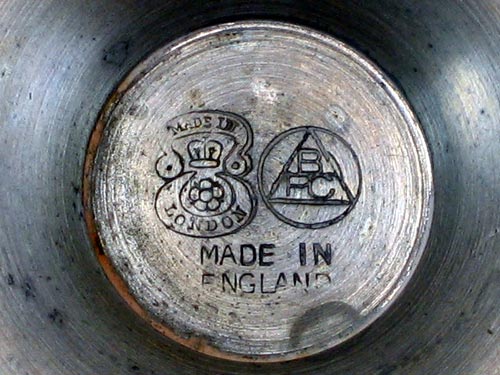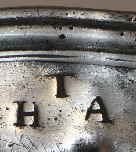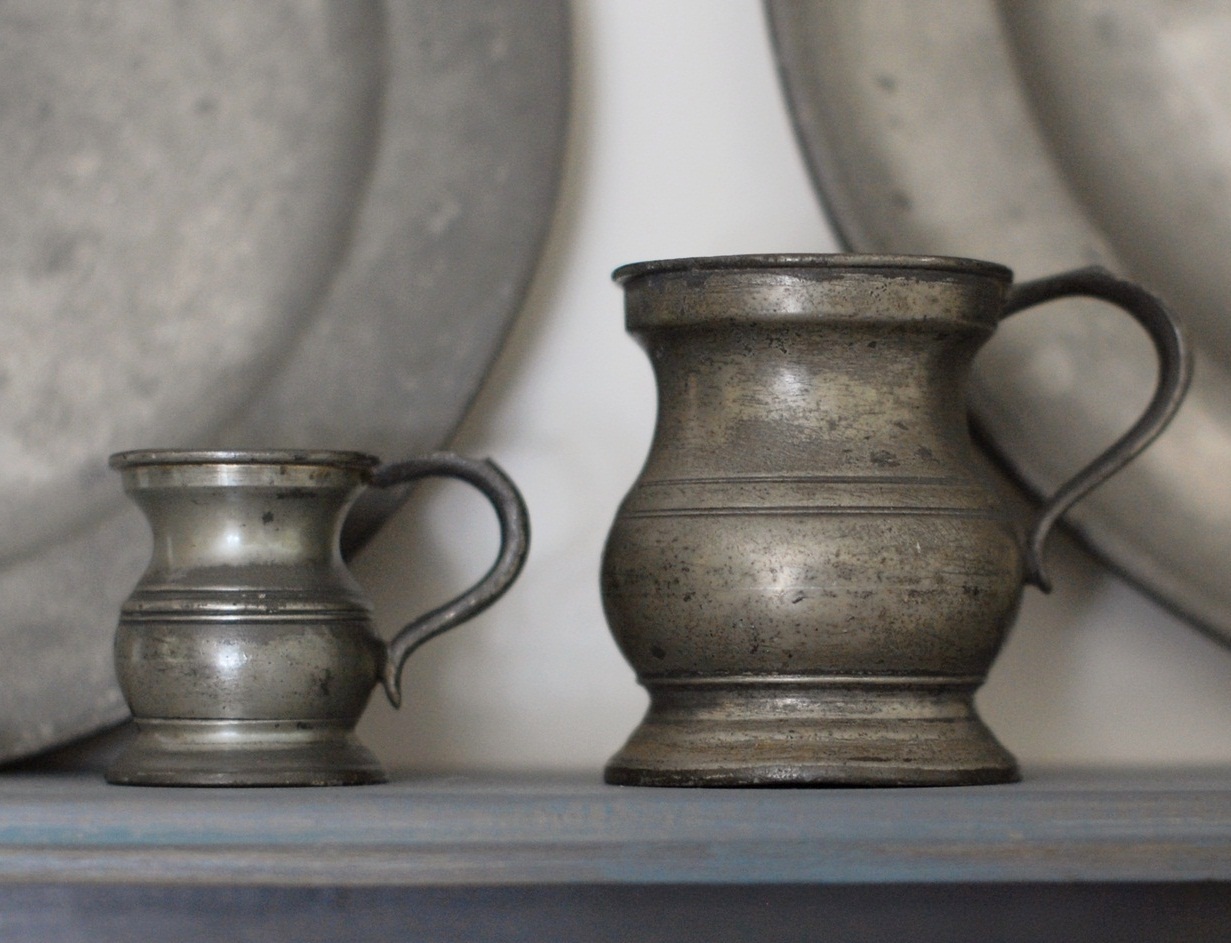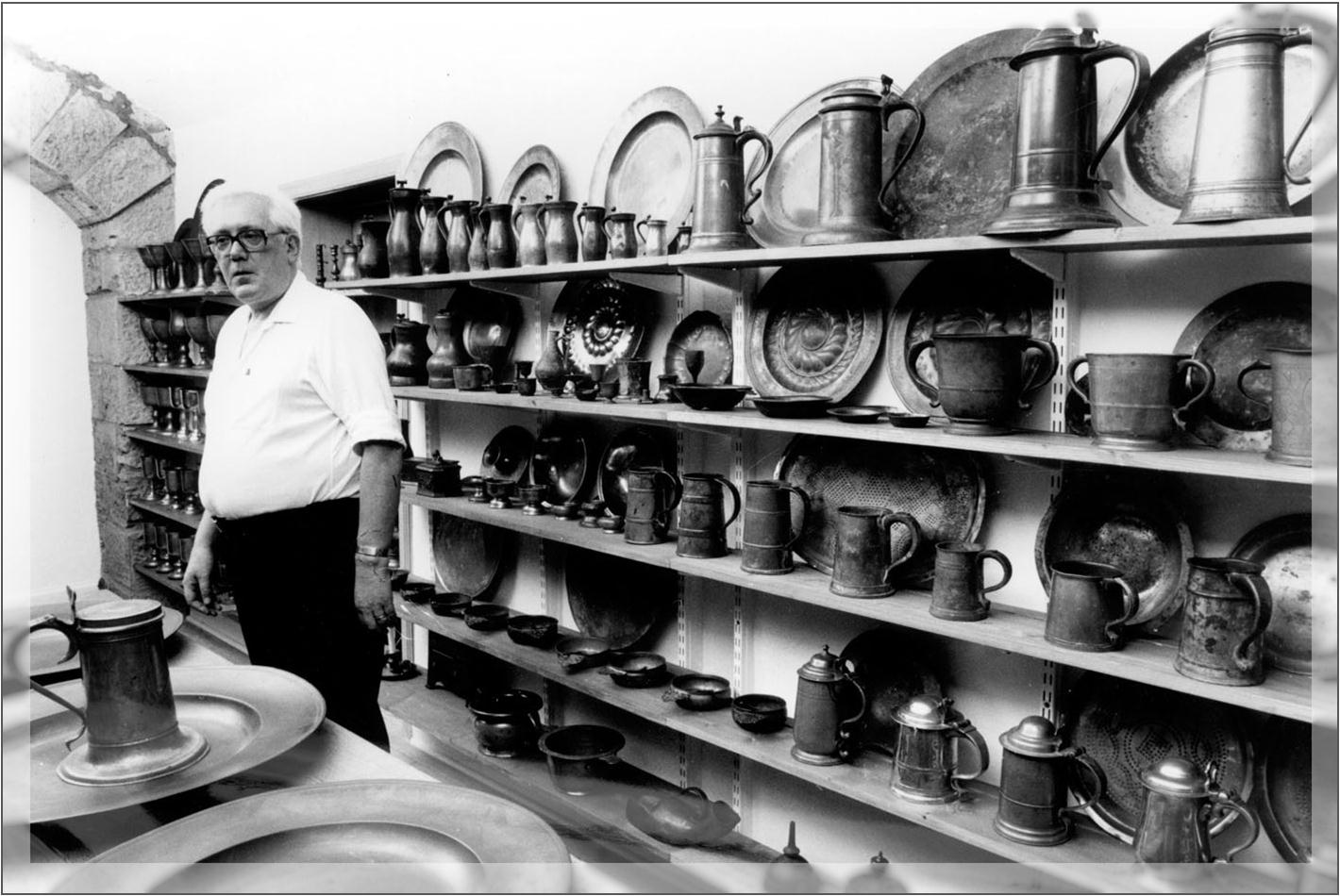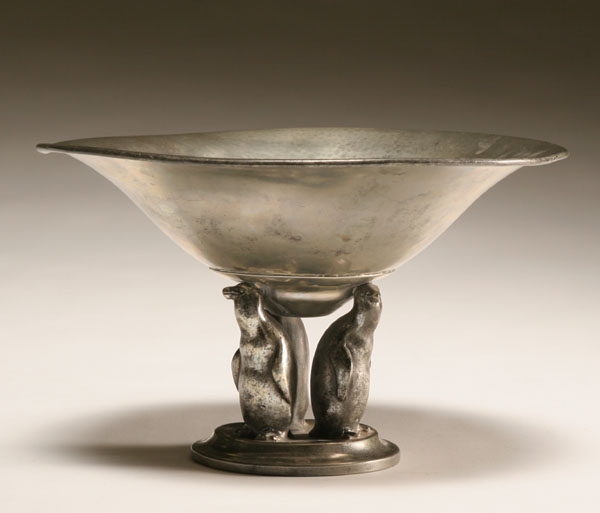These are the most important marks to be found on pewter. ‘Touch marks’ or ‘touches’ as they are known are the maker’s marks and take their name from official ‘touch plates’ on which they were stamped when being registered at Pewterers’ Hall.The earliest touch plates dated from the beginning of the 15th century but were lost in the Great Fire of London in 1666.The practice of registering marks on the touch plates began again two years later and continued until 1824.
The marks do not appear on the touch plates in chronological order, having been punched in any empty space in a haphazard fashion. Five copper touch plates survive at the Pewterers’ Company, but the corresponding register of makers has been lost, making individual identification impossible in many cases.
A maker’s touch mark often consisted simply of his initials or name, but could also incorporate elaborate designs, sometimes with a play on words based on the man’s name. Dates also occasionally form part of the mark, but they indicate the year when the touch was registered rather than the year the piece was made. The size of the touch marks varies according to the size of the item on which they appear, but as a very general rule, early marks tend to be smaller than later ones.
Sample Touch Marks
Ley and trifle pewter did not carry any marks of quality. Plate pewter was marked with a letter’X’ (denoting extraordinary ware), sometimes with a crown above it (1),= or was stamped with the words ‘hard metal ‘or’ superfine hard metal’ (2) A rose and crown stamp (3) also indicated fine quality pewter. At first this mark was for export ware only, although by the 18th century it had become more generally used. From the late 17th century, the word’London’ was added to the rose and crown, but it was often used by provincial pewterers also, and so is no guarantee of provenance. Far right John Barlow of London1699 – ?
Sample Touch Marks
The touch marks below are a small selection of examples where identification of the maker is possible.They are taken from Touch Plates I and IV at Pewterers’ Hall, and serve to illustrate the variety that exists among the hundreds of touch marks registered there. If the touch mark you are seeking is not included, you should consult one of the specialist reference works on pewter marks in your local library. Note that ‘master,’ ‘warden’, ‘steward’ and ‘yeoman’ were ranks and appointments within the guild structure of the Pewterers’ Company.

known as Hall Marks (4 of them that look like they were put there separately – rather than altogether) and were likely made by the Maker of the plate.
Pewterers Hall
Oat Lane,
London,
EC2V 7DE
Telephone: 020 7606 9363

